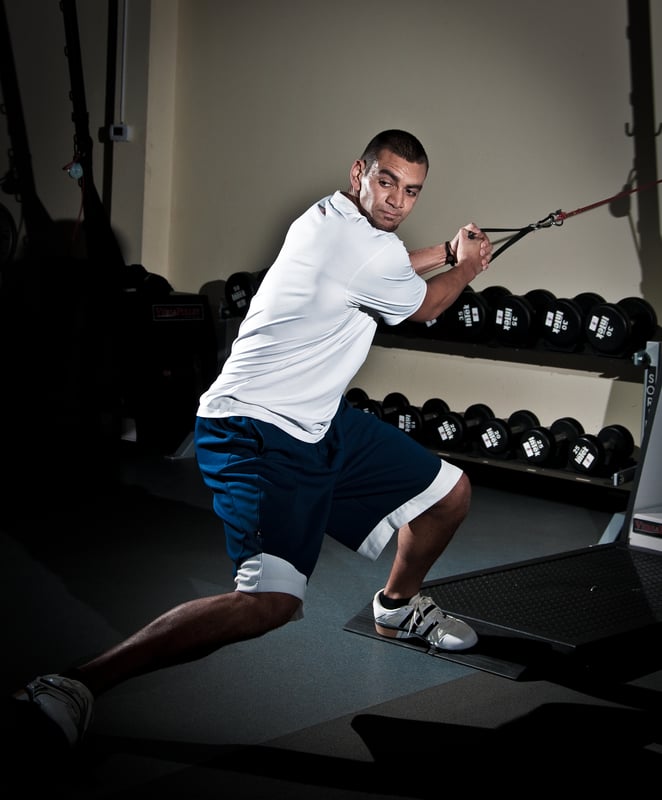
The Versapulley is the favorite (and only) machine that we use at Sparta. Most of our training revolves around lifting, jumping, sprinting, throwing, and cutting. We love the Versapulley because it allows us to add dynamic resistance to the athletic types of movements that our program is built around.
The inertial resistance of the Versapulley allows us to dynamically load the concentric and eccentric portion of movements. The more force an athlete produces, the more force they must also control on the eccentric portion of the movement. Additionally, the Versapulley allows us to objectively measure power output for each rep via the IPU meter. This is great for feedback on movement quality and motivation to push harder.
Powerful hip extension is one of the keys to performance, especially the DRIVE variable of the Sparta Signature. Power is defined as the ability to produce maximal forces in minimal amounts of time. Olympic lifts are a great tool for developing power because they require the athlete to produce force to accelerate a load. This is the essential application of power.
The Versapulley Power Pull is a great alternative to Olympic lifting as an exercise for developing athletes’ ability to produce powerful hip extension. The Power Pull has a few distinct advantages that make it our “go to” movement for developing reactive strength with the posterior chain.
Easy to Learn – unlike the Olympic lifts, the Power Pull is not a technically complex movement. We are able to teach this movement to young lifters, and they can start to get benefits immediately.
Universal Resistance – because of the inertia, each athlete creates their own resistance. This means that we can see objective power readings from a beginner and advanced athlete without changing weights or using different machines.
Eccentric Loading – Olympic lifts are often completed by dropping the weight on the floor. The Versapulley provides increasing eccentric resistance based on the amount of force that the athlete produces. As a result, the athlete must decelerate and change directions with each rep. This has huge benefits for controlling body position through amortization and improving movement efficiency.
Start with feet hip width apart and toes straight ahead
Build rhythm on the Versapulley by hinging from the hips and extending at the ankle, knee, and hip
Brace the torso to maintain body position while decelerating at the bottom of the movement and driving into the next rep
Our search for more efficient ways to improve athletes’ performance has led us to new exercises like the Versapulley Power Pull. In the process, we have increased our understanding of the movement qualities that we are trying to affect with each athlete and increased the objectivity of measurement of each exercise. What areas in your program can you improve the efficiency and objectivity of your training protocols?